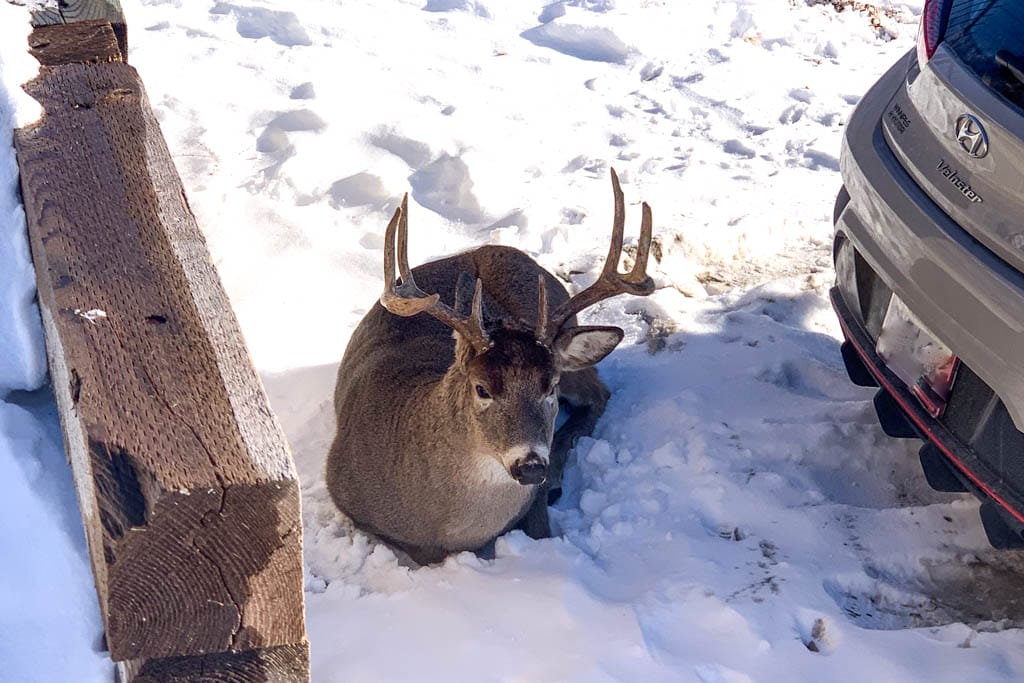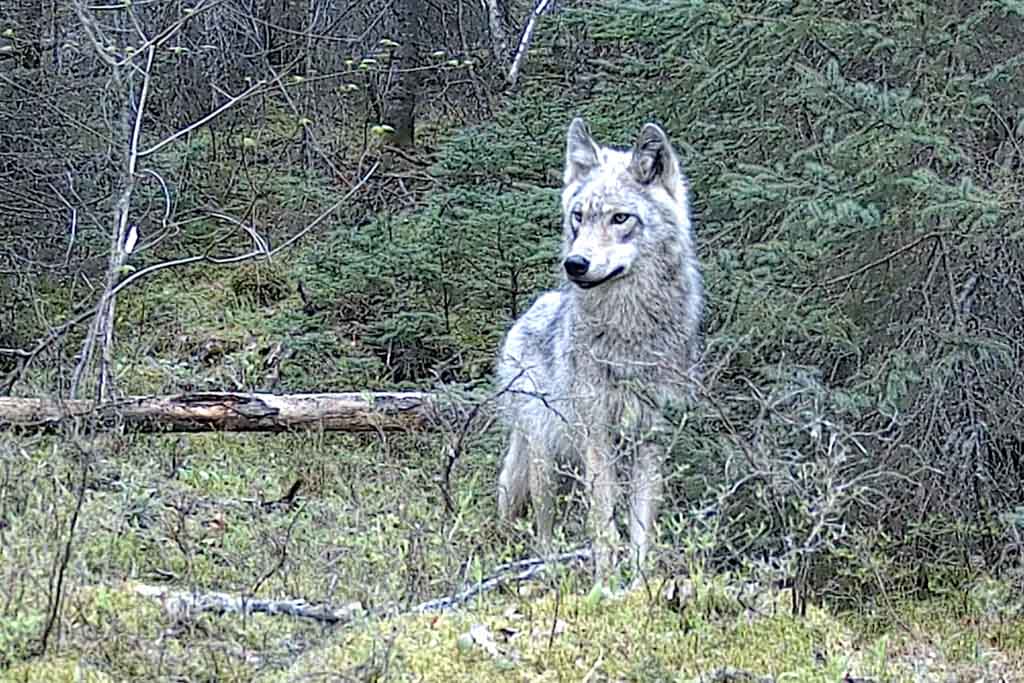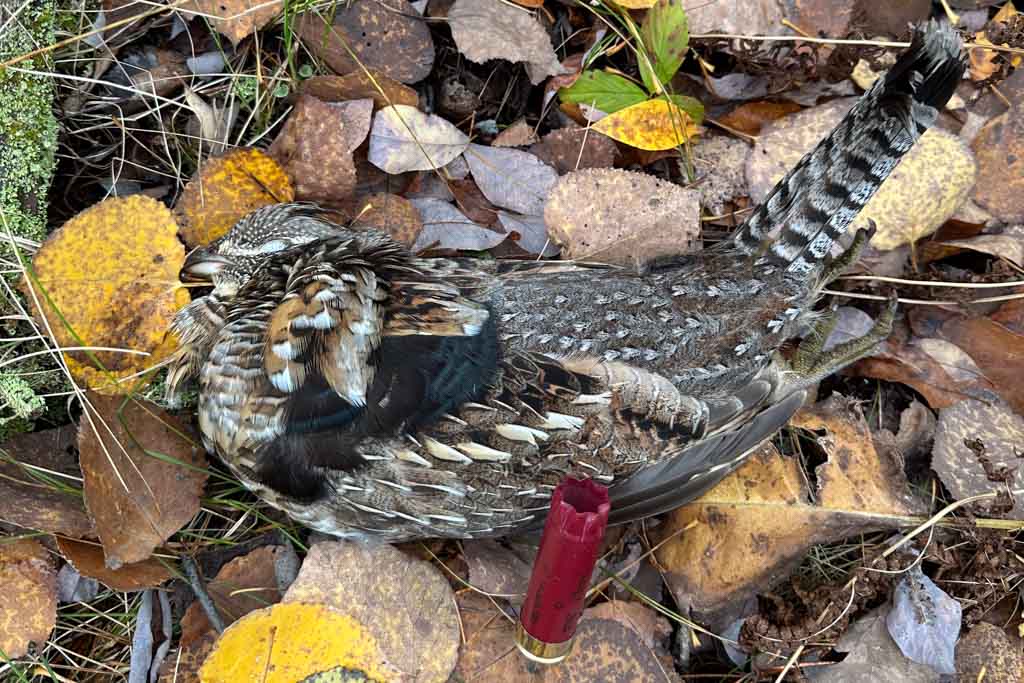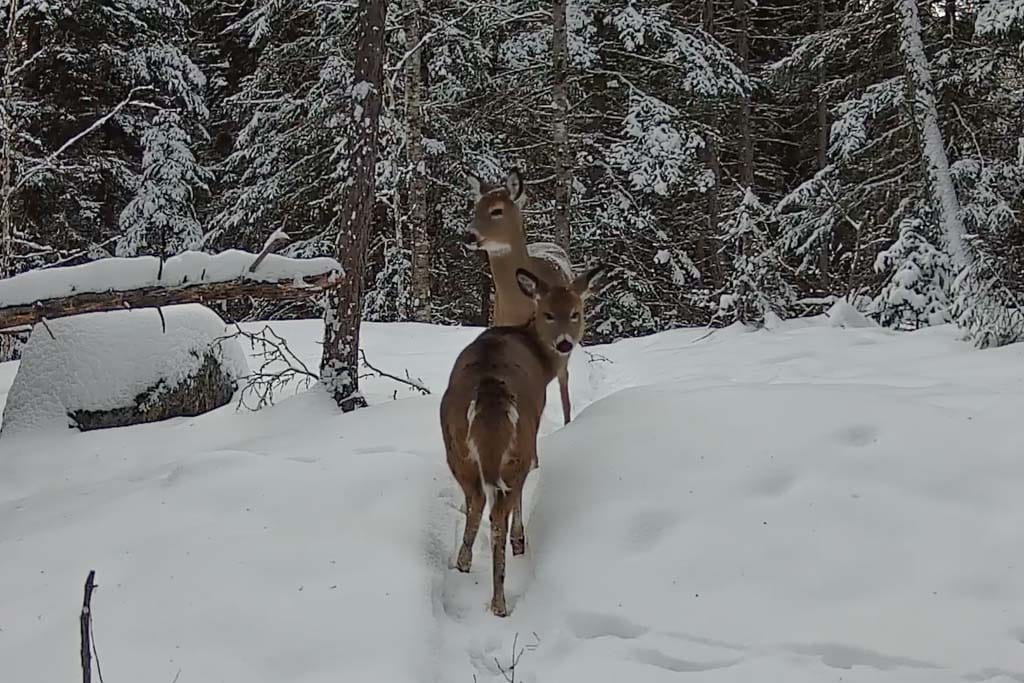If you do the best exercises for hunters, your trip will be much more enjoyable—and you’ll stand a better chance of earning that prize trophy.
Getting outside in the Whiteshell or Northwestern Ontario is one of the best things you can do for your health, and with a little training, you can make the experience even better.
Whether you’re hiking, hunting, swimming, paddling, sledding or riding a quad around Kenora, fitness will help you avoid injuries, play outdoors longer and deal with all the challenges nature can throw your way.
If you’ve ever had to stop on the trail repeatedly or put down the paddle because of a sore shoulder, this article is for you. Or maybe you’d like to try a tougher trail, haul out bigger game or paddle faster.
Read on!
Fitness Goals for Kenora Hunters and Outdoorspeople
The recommendations below are designed to produce two main benefits:
1. They’ll help you strengthen the muscles involved in common outdoors movements and prevent common injuries.
2. They’ll help you improve your overall fitness. This is referred to as “general physical preparedness” or “GPP.” In the woods or on the lake, think of it as the ability to do anything physical for as long as you want.
Did you known the Ontario Hunter Education Course recommends hunters get in shape? It’s true: “Physical conditioning is very important. Outdoor experiences can require more physical exertion than a hunter gets in everyday life. Prepare for the hunt long before the season starts.”
So how long does will it take to see changes if you do the best exercises for hunters? Not very long. We’ve trained people for 12 years, and we know people who commit to training will see noticeable improvements in strength and conditioning within a month. Train longer and the results become even more impressive.
How often do you need to train to be fit for the great outdoors? About two to four times per week—but you need to do the best exercises for hunters, not random stuff from a magazine.
The info below will get your started, but if you’d like more help improving your fitness for hunting and lake life, click here to talk about a precise plan, instructions and accountability so you get results.

The Best Exercises for Hunters and Outdoorspeople
A lot of the exercises you’ll see in magazines are great for bodybuilding or toning. But they won’t help you when you have a 200-lb. buck and miles of Canadian Shield to deal with.
You don’t need complicated, shiny machines. You need grunt work that gets a bit of dirt under your nails and produces great results fast.
The movements below are simply the best exercises for hunters. We’ll tell you why they’re going to help you on the trail and how to do each one. We’ll also provide some general set and rep schemes—but these are examples only. A fitness pro can tell you exactly how much weight to lift and how many reps to do.
Weighted Lunges and Step-Ups
This isn’t the Prairie. Kenora and Northwestern Ontario are rugged. You’re dealing with significant elevation changes, overgrown trails, fallen trees, large boulders, swamps and deep snow. And you’re carrying hunting gear that can include firearms, ammo, supplies, tents and more. Maybe you’ll need to jump over a ditch and avoid a booter.
All that means you need single-leg strength and power.
Train your legs the way you’ll generally use them outside: one at a time. We’d recommend you do lunges wearing a weight vest or holding dumbbells. Keep in mind a good deer rifle can weigh 8 or 10 lb. when you figure in a scope and its mounts. And that doesn’t include any other gear you’ll be carrying (extra cartridges, binoculars, knives and field-dressing tools, etc.). You need to train with weight!
Step-ups can be done from 4-8 inches all the way to 24 inches or more. You can also use odd objects instead of dumbbells (see below). Step-ups are an essential training movement because you’re going to be climbing and walking in deep snow or water. That’s hard work, so train for it!
Lunges: Stand tall and take a step forward with one leg, keeping your torso upright. Ideally, your knee will be over your ankle, not in front of it. Let the back knee kiss the ground. Push off the front leg and come back to standing. You can also do reverse lunges by stepping backward, and we sometimes use 45-degree lunges or sideways lunges also called “cossacks.” To add a challenge, we’ll even elevate the back leg for some people.
Step-Ups: Using a very stable object that can support your weight, place one foot on top. Avoid pushing off the back leg. Use the front leg as much as possible to move on top of the object with both feet. The torso should remain fairly upright throughout. Then reverse to come off the step. You can alternate working legs or do all reps on one side before moving to the other.
Sets and Reps: For strength, try 3 sets of 6-8 reps per leg with an appropriate load. For endurance, try 20 per side with a lighter load. You might find that your grip strength gives out before your legs do!

Sled Drags and Pushes
If you spend any time outdoors, you’re going to end up pushing or pulling something. Think of beaching a boat or pushing off from shore. Or maybe you’ll be dragging a log out of the way so you can get a quad down the trail. Or perhaps you’ll have to pull an anchor free of its hold so you can fire up the outboard and enjoy the Winnipeg River System at wide open throttle.
Sled drags: You can drag any object, especially if you tie a rope or strap to it. Just make sure the anchor point and the rope are strong. We use special straps and a custom-built metal sled called a prowler. We load it with weight to increase difficulty as needed. Work on your core strength and upper body by keeping your feet planted and pulling a sled toward you. Or you can hold the strap and walk forward or backward to work your legs.
Sled pushes: These are harder to replicate without one of our sleds. We’ve seen people use shopping carts and lawn mowers, but here in Ontario it’s important to ensure nothing with wheels will slide back toward you if you aren’t on flat land. For some people in the Kenora area, mowing the lawn is a long sled push, and it’s definitely a great workout!
Sets and reps: Start with 4-6 trips of 60-100 feet with a load that makes the muscles burn as you complete the last steps or pulls. Rest about 1 minute between sets.

Rows
If your motor breaks down, you might have some actual rowing to do on Lake of the Woods.
But in the gym, a row is a pulling movement designed to train the back and arms. It’s essential for people who will be picking anything up. Think of getting a log into the back of a truck, tilting an engine out of the water, and so on. Paddling is also a rowing movement, so if you spend any time in a canoe or kayak—or on a paddleboard—rows will help. Reeling in a muskie or huge Northern pike? That is most definitely a pulling movement that requires a strong upper body and core.
Dumbbell rows: You can do this exercise with almost any object that has a handle. Put your left hand and left knee on a very stable bench. Leave your right leg on the floor and grab the dumbbell in your right hand. With your torso parallel to the floor, pull the dumbbell to your shoulder by moving your right elbow behind you. Engage your abs to keep your chest to the floor and avoid twisting. Slowly lower the weight back until your arm is fully extended. Reverse the set-up for the left arm.
Sets and reps: Start with 2-3 sets of 8-10 reps per side.
Deadlifts
The deadlift is the most functional movement you’ll ever come across. Simply put, deadlifting is safely picking an object off the ground. You can imagine hundreds of hunting and fishing scenarios that involve lifting. Anyone with a pickup truck needs to get stuff into the box. Any hunter who’s taken a deer or moose has to deadlift. Anyone who’s found a trail blocked after a storm has done some deadlifting. It’s essential for outdoorspeople!
Deadlifts: Deadlifts can be done with a dumbbell or barbell, but we’ll offer instructions for odd objects in case you don’t have equipment. You can use these instructions whenever you need to pick something up. First, put the object between your feet if its size allows. If not, your feet will have to be behind it. With a rigid spine, bend at the hips to get your hands on the object and get a good grip. Slightly bend your knees, but do not squat. With your spine absolutely held stiff by your core muscles, extend your hips and knees to come to standing while holding the object.
Sets and reps: 3-5 sets of 3-5 reps with heavier objects or 2-3 sets of 8-12 reps with lighter objects.

Shoulder Presses
At some point, you’re going to have to move an object overhead. This could can a canoe or kayak, or it could be a pack you’re keeping dry while you wade through a stream. Or maybe you’re just putting supplies on top shelves in your garage after hunting around Sioux Narrows.
To prepare for this, the overhead press is your best friend. You could also use a bench press, but this requires more equipment, and it’s not as functional: How many times do you lie down and press something off your chest in the real world? Rarely—but you move objects overhead all the time.
Shoulder press: Holding a barbell or dumbbells at your shoulders, stand tall with your feet at hip width. Engage the muscles of your core to keep your spine stiff, and squeeze your butt. Then push the weight overhead—if you’re using a barbell, you’ll have to pull your chin back to allow the bar to pass just in front of your nose. Slowly lower the weight back to your shoulders. Avoid arching your back at any time. You can also do this exercise with a single arm, and you can use odd objects as long as you won’t drop them on your head!
Sets and reps: 2-3 sets of 8-12 reps.
Odd-Object Carries and Training Hikes
If you spend any time at all in the bush, you’re going to have to lift and carry some odd objects. Nature doesn’t come with handles, so you’re going to be wrestling with logs, carcasses, boulders and so on. You need to be prepared, and carrying odd objects will build core strength, grip strength and stamina. And you know there are no roads that lead exactly where you want to go, so you’re going to rely on your fitness to get you where you need to go.
Odd-Object Carries: Find any object and use the deadlift to pick it up safely. You can carry it on a shoulder, with a bear hug in front of you, in a pack on your back, in both hands at your sides—it doesn’t matter. Then go for a walk. With lighter objects, you’ll be training stamina as you carry an extra load for a longer distance. With heavier objects, you might only walk 50 feet before you rest. We recommend you do both.
Sets and reps: Try a hike of 20 minutes wearing a 20- or 30-lb. backpack or carrying any object of a similar weight. Maybe carry a rock around the Tunnel Island Trail to build endurance! For much heavier loads, you could set a goal of 3 trips of 100 feet, and you might have to stop and rest at intervals before continuing.

The Best Exercises for Hunters—What Should I Do?
We’ve given you an overview of the best exercises for hunters and explained how each one will help you. But you’ll get better results with a personalized plan that combines all or some of them and includes the exact sets, reps and loads that will help you accomplish your goals.
For example, a hunter who has strong muscles but struggles with long hikes might need a plan that involves more endurance work. An outdoorsperson who can hike for days but struggles to get the deer back to the truck will need a plan that emphasizes strength work.
And a coach can make sure each person is doing the exercises properly. We can also adjust exercises for any equipment you have or odd objects you might be able to use.
A Plan That Gets Results
The exercises we’ve listed above can be combined into a workout program that will produce quick results. Training just two to four times a week for 30-60 minutes, you’ll improve strength and conditioning significantly in a month. Continue training and you’ll see dramatic improvements over three to six months.
Hunters and outdoorspeople can start a workout program at any time. Off-season training can ensure you’re ready when hunting season opens, and we recommend you start training one to three months before you’re planning to head into the bush or onto Lake of the Woods. But you can also make significant improvements in season, and there’s no reason to put off starting a training program.
We can combine the best exercises for hunters in a training plan that’s perfect for you. With just a little work, you’ll get the most of out of hunting seasons and enjoy your time outdoors in Kenora and Northwestern Ontario even more.


